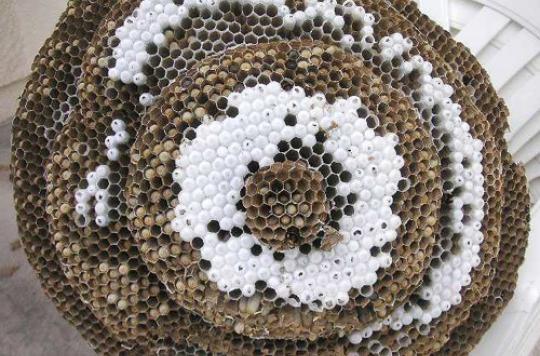Scientists from Tours have come up with two solutions to overcome the Asian hornet, an invasive species that attacks bees and whose sting can cause death.

It decimates entire hives. Arrived in the south of France ten years ago, the Vespa velutina, or Asian hornet, has become the bête noire of beekeepers. But this invasive species could soon be eradicated. Researchers from Tours (Indre-et-Loire) have developed two solutions to overcome this.
A disturbing presence
The Asian hornet, nicknamed the yellow-legged hornet, is native to Asia, as the name suggests. In France, it was detected for the first time in 2004 in Lot-et-Garonne, probably imported from South-East Asia in Chinese pottery containers. For ten years, it has proliferated and today covers 70% of French territory.
The case of the Indre-et-Loire department is eloquent: when the species arrived near Tours in 2009, researchers noted three colonies. In 2011, there were forty; two years later, they numbered between 400 and 600! Even Eastern Europe, spared so far, is starting to be affected.
“This species is a big concern because it feeds on many insects, including bees, and threatens biodiversity, explains to AFP Éric Darrouzet, teacher-researcher at the Institute for Research on the Biology of Insects (IRBI) from the University of Tours. In addition, its bite can be fatal ”.
>> Report on Asian hornets and their bee attacks, by Zoé Delépine (director of the film: “Asian hornets: the wolf in the sheepfold“)
Target the hornet queens
By autopsying the corpses of hornets with a binocular magnifying glass, this scientist had an idea: to use a parasite, Conops vesicularis, a kind of small fly that lays its egg in the spring on queen hornets. Objective: target the head of the colony to better decimate it. Because if the parasite kills the queen, the entire colony does not survive it.
“The egg hatches, and the larva, like ‘the Alien’ in the film, will develop in the abdomen of its host, which will lead to the death of the queen after ten or fifteen days”, explains Éric. Darrouzet This discovery is essential. The only problem with this biological control system: “It will take years to demonstrate that this parasitoid has a preference for the Asian hornet and that it will not cause collateral damage to bees, bumblebees and wasps”.
A hornet trap
Another option on the mat: the good old trap – a little more elaborate than honey in a plastic bottle. Because it is a question of not trapping the other species. “One of the goals of our project is the fabrication of a selective trap. (…) A prototype is already 99% selective. At the end of 2015, we should have a selective trap available, ”continues Éric Darrouzet.
“We want to replace food baits based on sugar and proteins by a pheromonal bait (note: from an external secretion produced by an organism) based on volatile molecules emitted by hornets. These isolated molecules are currently being tested in the laboratory. We will do it next year in the field. The objective is to label and patent these traps. But for that we will need finances, ”warns the researcher.
While waiting for these innovative means, some beekeepers have found tips to scare away the Asian hornets that threaten their hives. In October, France 3 Aquitaine thus revealed the secret weapon of one of them: his hen. The animal is crazy about the proteins contained in the Asian hornet, which it easily captures between its claws.
The idea may inspire beekeepers, who will hold their 20th Congress of Beekeepers from October 10 to 12 in Colmar (Haut-Rhin).
.

















